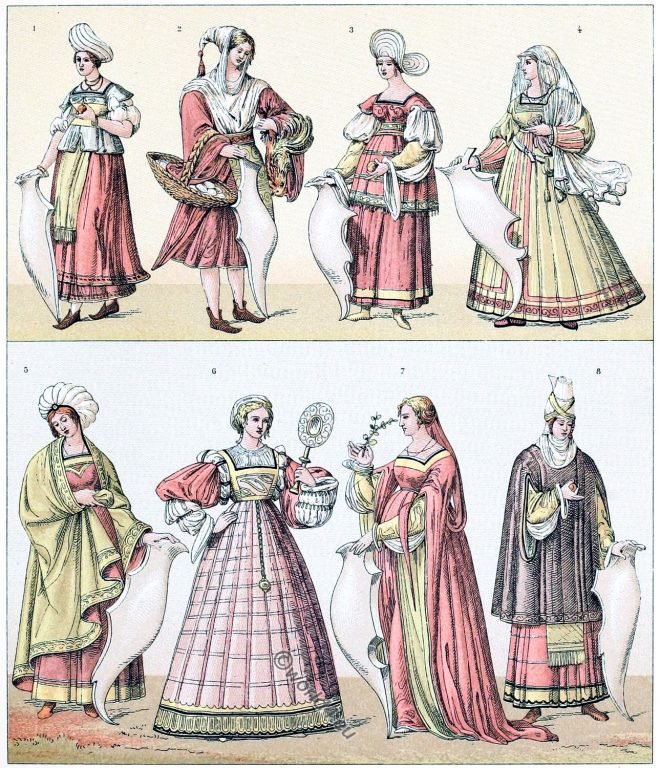France. Civilian clothing 1485-1510. Men’s and women’s hairstyle. Between 1470 and 1475 the high pointed hoods (Hennin) disappear.
Category: Genre
Italy. Female costumes of the early Renaissance. The balzo.
Italy. The fashion at the beginning of the XVI century. Female costumes. According to local traditions and social status. The balzo. Early Renaissance.
Egypt. War dresses. Headgear and various costumes.
The representations on this panel are taken from Upper Egyptian wall paintings. War dresses. Headgear and various costumes. The pharaoh in the fight. The war chariot. Vultures and sparrowhawks were the symbol of supreme power.
The Illuminati and their era. Imitations of Illuminism. Freemasonry.
The Illuminati and the Freemasons. Freemasonry and the French Revolution. The Order of Perfectibilists.
The ancient Egyptians of the high antiquity. Costumes, headgear, wigs.
The headgear of the ancient Egyptians. The colour of the dresses. Wigs, Hairstyles, Make-up. The care of the hair. Transparent garments.
Hebrew. Jewish clothing of antiquity. Levites. Jewish high priest.
The clothes of the high priests. Similarity of the Hebrew with the Egyptian priestly garb. The Ephod. The Mehil. Jewish high priest. Levites.
German Renaissance fashion of a noblewoman with a red beret.
German Renaissance fashion of a noblewoman from the beginning of the 16th century, with a red beret, long dress with train over a white underdress of camelot and a partlet of red silk with black velvet.
Civil dress of the late 15th century. France middle ages.
Civil dress in Europe at the end of the late 15th century. Female and male hairstyles and headgear.
Wedding of the Boccaccio degli Adimari. Italian Renaissance.
Fashion of the Italian Renaissance. Marriage of Boccaccio Adirmari with Lisa Ricasoli in 1420. Groom with the chaperon. Interior of the cell of the Dominican Savonarol
Anne of Cleves, fourth wife of the English King Henry VIII.
Anne of Cleves (1515 – 1557) was the fourth wife of the English King Henry VIII.










